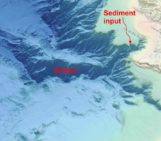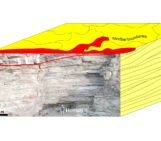
While working on the exceptional, but remote outcrops of Baja California, I have encountered an extraordinary quantity of fossilized tree fragments in Cretaceous deposits. These fossils were preserved in both subaerial, fluvial, and marine environments. Does this mean that preservation of tree trunks is easy? How can wood be preserved for more than 70 million years? What kind of information can we obtain from fossilized trees? Let’s try answer all these questions.
Fossil wood can be preserved through various mechanisms, such as mummification, petrification, or impregnation with various substances (Sweeney et al., 2009; Mustoe, 2018). Silicification is one of the most common processes for preserving tree trunks. Groundwater rich in silica (SiO2) infiltrates the sediment and the buried wood. As the organic material decomposes, the silica in the water dissolves and penetrates the cellular structure of the wood. Then, the silica precipitates and fills the spaces within the wood, either through ‘permineralization’, where the silica fills the empty spaces, or through ‘replacement’, where the silica replaces the organic material cell by cell. Over time, this leads to the complete mineralization of the wood, turning it into stone while retaining its original structure. Eventually, the silica-impregnated wood hardens into quartz, forming petrified wood. This process can take millions of years and preserves the detailed structures of the original wood.
Eventually, the silica-impregnated wood hardens into quartz, forming petrified wood
Silicification depends on the presence of abundant silica, which is commonly found in nature as quartz. Therefore, quartz-rich sediment is essential. However, other components of different sediment types also play a crucial role in the preservation of tree trunks for fossilization. Research has shown that the mineralogy of different sediment types affects the preservation of plant remains. For example, laboratory experiments have demonstrated that kaolinite positively affects the stabilization of wood structure, while montmorillonite negatively impacts the preservation of protein levels. In any case, before fossilization, the wood must not decompose due to microorganisms before its complete burial. Natural chemical compounds found in plants, such as triterpenes, fatty acid derivatives, phenolic compounds, and essential oils, can preserve wood against degradation by termites or fungi, aiding its fossilization over time. Pre-fossilization degradation, such as silicification, can make the preservation of these ancient pieces of geological history quite challenging. So, no, it is not easy for wood to be preserved, fossilized, and remain buried for tens or hundreds of millions of years.
However, there are places where silicified tree trunk fragments can be easily observed, such as the outcropping areas of the El Gallo Formation near the city of El Rosario in Baja California. Thousands of fossilized tree fragments are either embedded in fluvial sandstones or scattered across over the slopes modern alluvial deposits (Figure 1).
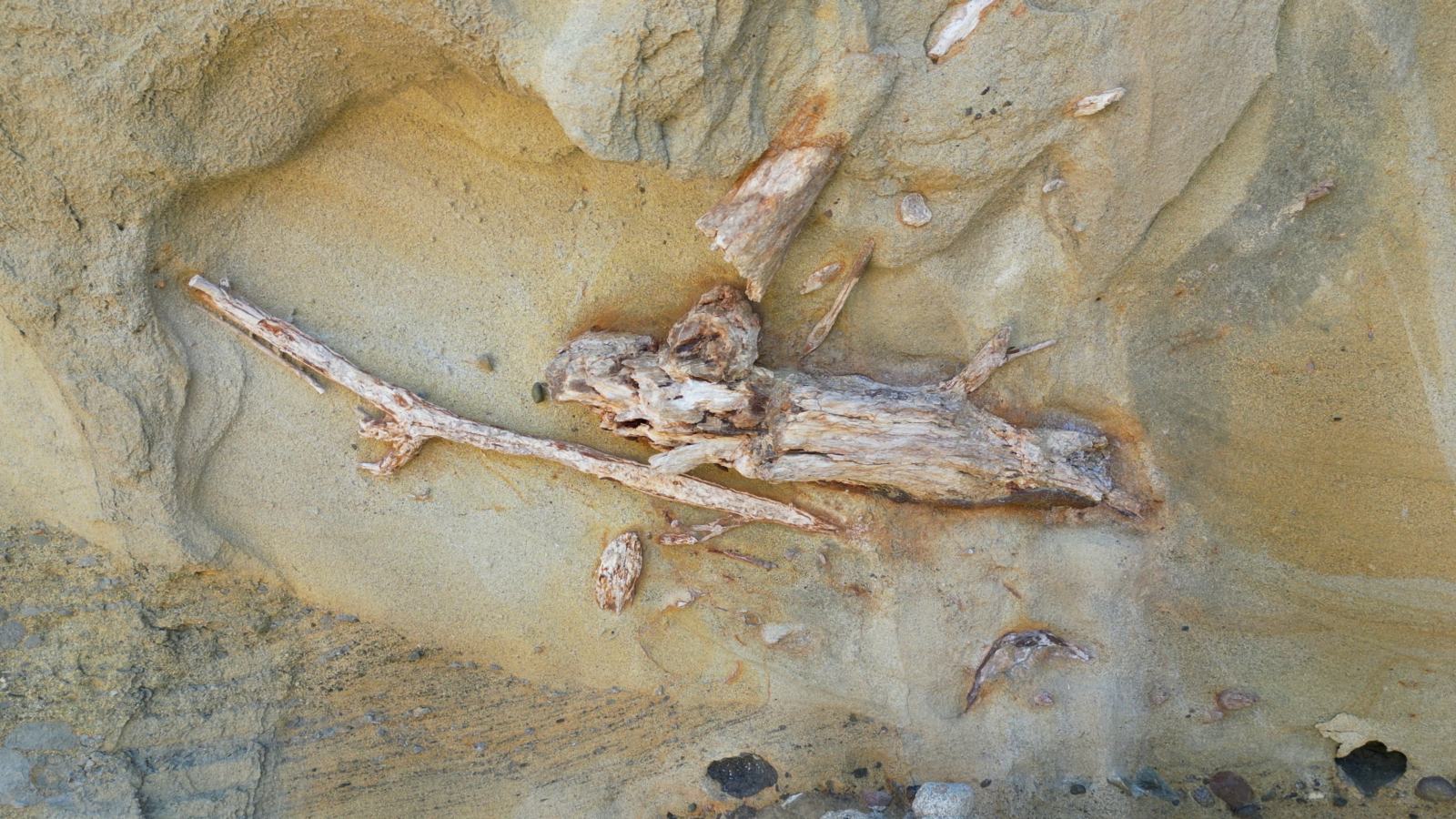
Figure 1: These are fragments of Cretaceous branches and tree trunks in channel fills of aluvial systems of the El Gallo Formation.
In this case, we can speculate that the mineralogy and paleoenvironmental conditions during the burial of the plants were optimal, allowing us to observe thousands of fossilized tree remains today. The sediment type, very fine to medium quartz-rich sandstone, certainly aided in the fossilization process (silicification). The tree trunk remains found in this formation are exceptionally well-preserved, often retaining bark, growth rings, medullary rays, piths, and branch nodes. The quality of preservation is so high that it constitutes a Lagerstätte: a site with extraordinary fossil preservation. Studies on these tree trunks, macroscopic plant remains, and pollen from the El Gallo Formation indicate a terrestrial ecosystem with wet/dry cycles during the Cretaceous.
But the El Gallo Formation is not the only one containing fossilized trees. There are other geological formations further south of El Rosario, such as the El Rosario Formation, which contain fossilized trees in both non-marine and deep marine sediments, dating from the Upper Campanian to the Lower Danian stages of the Late Cretaceous. The study of fossilized wood from the Rosario Formation in northwestern Mexico reveals important details about the environment during the Late Cretaceous period. Scientists discovered a new species, like the Rosarioxylon bajacaliforniensis, which belongs to the Lauraceae family (Cevallos-Ferriz et al., 2021). The fossilized wood has distinctive growth rings and various vessel structures, suggesting that the climate had seasonal variations, with differences in temperature and precipitation throughout the year (Figure 2).
the climate had seasonal variations, with differences in temperature and precipitation throughout the year
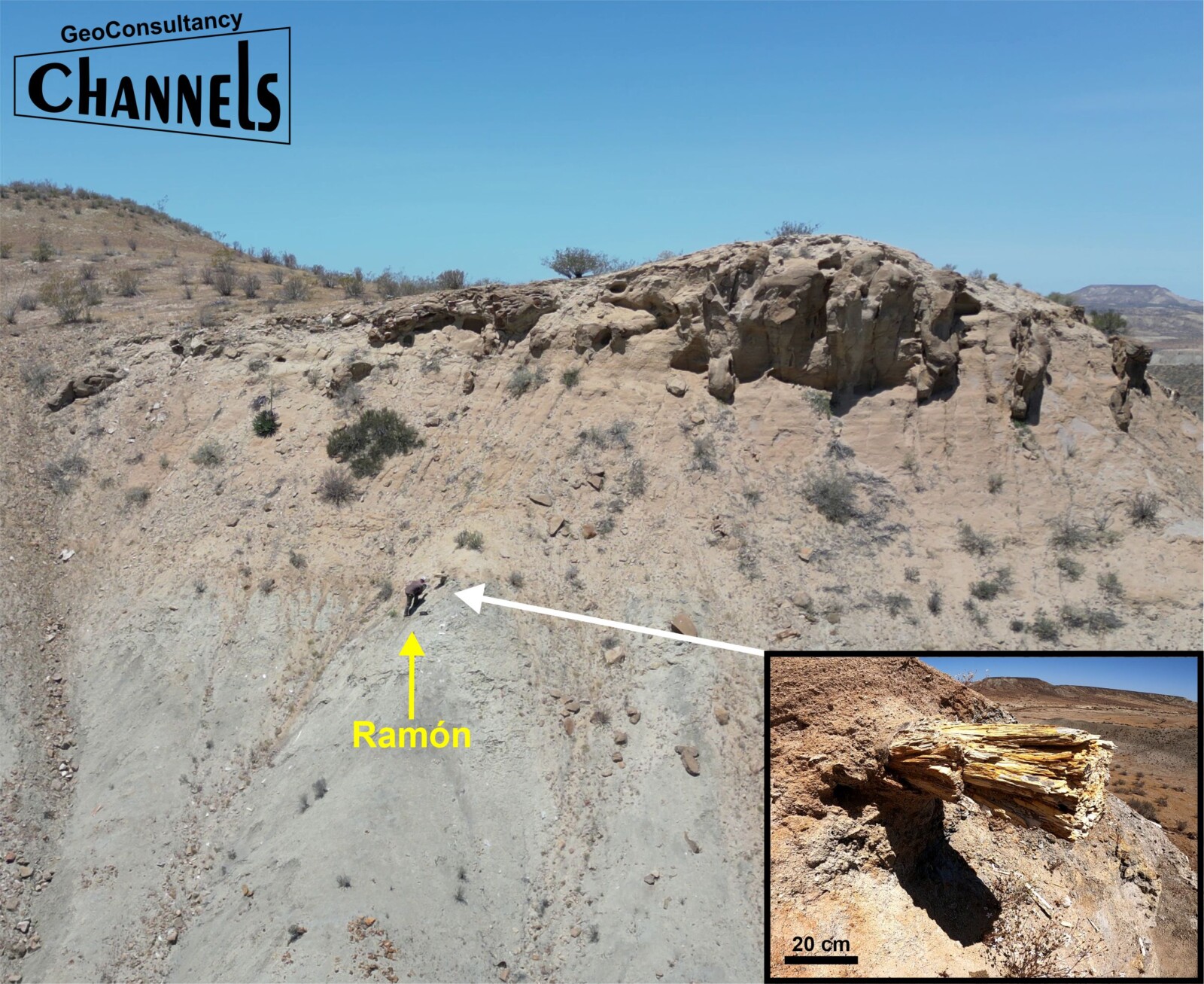
Figure 2: This extraordinarily well-preserved fossilized trunk is found in marine-origin deposits of El Rosario Formation that indicate mass transport. They are located in the stratigraphic zone where the K-Pg boundary is thought to be found. In this case, the trunk shows no evidences of carbonization as it can be seen in other trunks found in the very same area.
This seasonal variation implies that the area was probably warm and humid, similar to today’s tropical or subtropical climates. Rosarioxylon bajacaliforniensis has specific anatomical features, such as heterocellular rays and oil cells, which help classify it within the Lauraceae family. The oil cells indicate that the plant had defense mechanisms against herbivores and pathogens, suggesting a vibrant ecosystem. Finding Rosarioxylon bajacaliforniensis in Baja California shows that Lauraceae plants were widespread during the Late Cretaceous. The area, now the border between the United States and Mexico, once had lush forests with tropical plants, located along the coast. Conifer fossils found alongside the Lauraceae suggest that conifers were also common in these forests, indicating a complex forest structure with high biodiversity.
three main interpretations for the carbonized wood found in the fossil trunks with indications of these high temperatures: (1) ‘ordinary’ forest fire, (2) volcanic eruption, and (3) thermal radiation from an asteroid impact
This is not all about the fossilized trunks from the Rosario Formation: among them, there are charcoal fragments and partially charred tree trunks. Recent laboratory studies have revealed that some of these charcoal fragments formed at temperatures ranging from 395 to 1022 °C, with an average value of 716 °C (Santa Catharina et al., 2022). The studied fossilized wood fragments were deposited around the Cretaceous-Paleogene (K-Pg) boundary, and are found in or near volcanic deposits. It is possible to suggest three main interpretations for the carbonized wood found in the fossil trunks with indications of these high temperatures: (1) ‘ordinary’ forest fire, (2) volcanic eruption, and (3) thermal radiation from an asteroid impact. The forest fire interpretation has been considered less likely due to the inferred high temperatures, thought to be too high for a wildfire, as well as for the lack of evidence of degradation by wood-eating organisms, which typically act on burned tree remains. However, we must also consider studies that strongly suggest an increase in the occurrence and intensity of ordinary forest fires in the period immediately following the Cretaceous-Paleogene boundary (Brown et al., 2012; Gross, 2017). The volcanic eruption interpretation could be explained by the action of pyroclastic flows, as many trees affected by this volcanic process show the presence of charcoal layers similar to those found in the Rosario Formation, and temperatures can go over 600 °C (Scott and Glasspool, 2005). Lastly, the asteroid impact interpretation is also plausible since the deposit is at or near the K-Pg boundary, which is the time when the Chicxulub asteroid impact event occurred. However, in other outcrops at or near the K-Pg boundary on the American continent with abundant plant fossils, and around the same distance to the Chicxulub impact crater as for El Rosario Formation, no charred plant fragments have been found at all (Belcher et al., 2003; Spicer and Shackleton, 1989; Ekdale and Stinnesbeck, 1998). On one of my recent field trips, I found charred fragments in a volcanic deposit (tuff) near the coast, in a lower position in the Rosario Formation, so considerably older than the K-Pg boundary (Figure 3). It will be interesting to study these fragments to see if any of the three interpretations is favoured. In any case, we still do not have a sound diagnostic criteria for unequivocally distinguishing burning from any of these interpretations. But this is science and it is not necessary to hurry into a single interpretation when we are dealing with our dear friend…uncertainty.
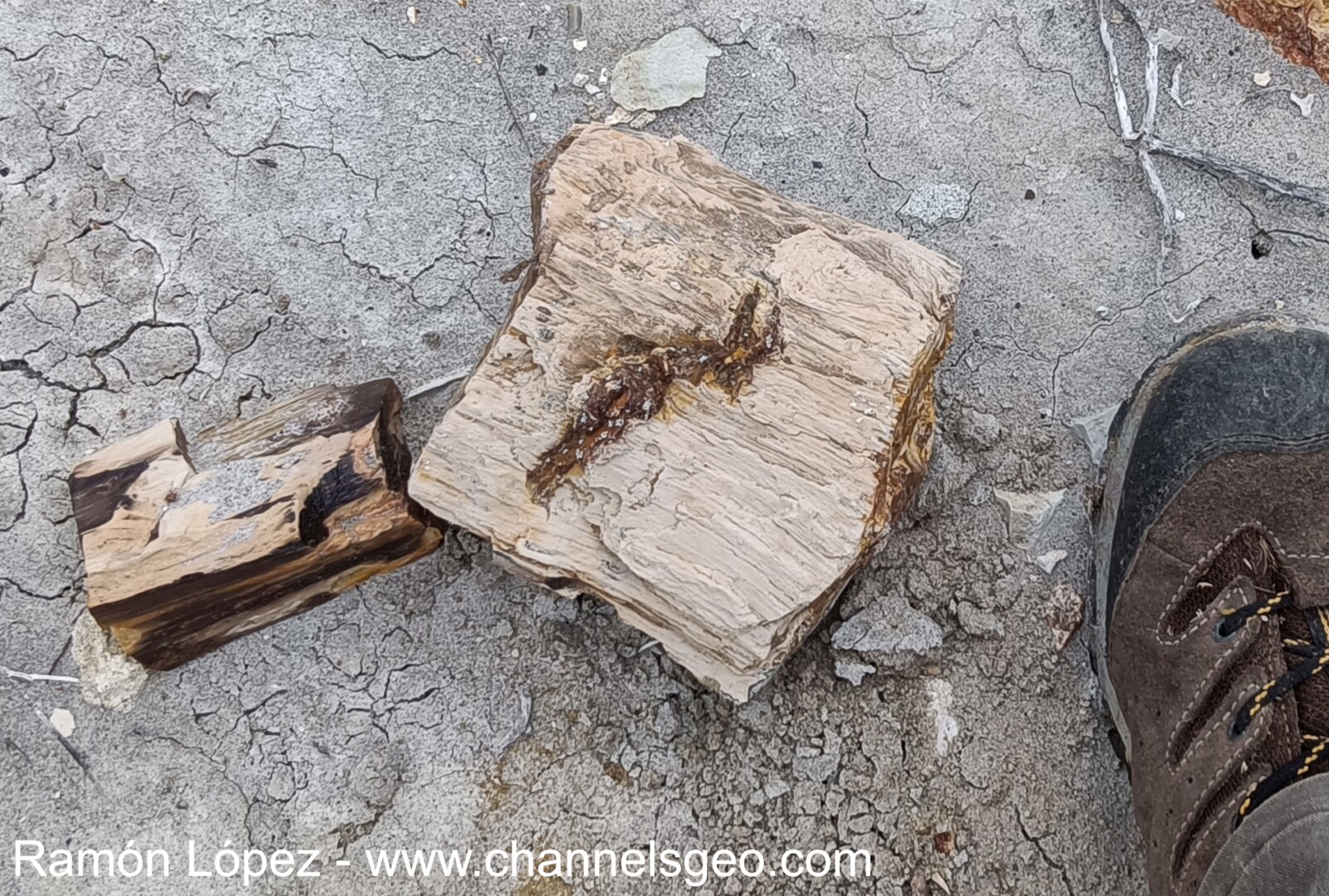
Figure 3: Fragments of fossilized wood with carbonized zones in the lower regions of the El Rosario Formation, near the current coast, in volcanic tuff deposits.
References
Belcher, C. M., Collinson, M. E., Sweet, A. R., Hildebrand, A. R., & Scott, A. C. (2003). Fireball passes and nothing burns—The role of thermal radiation in the Cretaceous-Tertiary event: Evidence from the charcoal record of North America. Geology, 31(12), 1061-1064. Brown, S. A., Scott, A. C., Glasspool, I. J., & Collinson, M. E. (2012). Cretaceous wildfires and their impact on the Earth system. Cretaceous research, 36, 162-190. Cevallos-Ferriz, S. R., Santa Catharina, A., & Kneller, B. (2021). Cretaceous Lauraceae wood from El Rosario, Baja California, Mexico. Review of Palaeobotany and Palynology, 292, 104478. Ekdale, A. A., & Stinnesbeck, W. (1998). Trace fossils in Cretaceous-Tertiary (KT) boundary beds in northeastern Mexico; implications for sedimentation during the KT boundary event. Palaios, 13(6), 593-602. Gross, M. (2017). An investigation of paleo-wildfires during the Cretaceous-Paleogene (K-Pg) boundary at El Kef, Tunisia. Mustoe, G. E. (2018). Non-mineralized fossil wood. Geosciences, 8(6), 223. Scott, A. C., & Glasspool, I. J. (2005). Charcoal reflectance as a proxy for the emplacement temperature of pyroclastic flow deposits. Geology, 33(7), 589-592. Shackleton, N. J., & Spicer, R. A. (1989). Plants at the K/T boundary. Nature, 338(6215), 401-402. Sweeney, J., Fedorowich, J. S., & Mustafa, H. (2009). Fossil wood from the Pleistocene of South Carolina, USA: Implications for environmental reconstruction. IAWA Journal, 30(4), 397-409.

